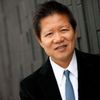The television show "Glee" just nabbed four Emmy wins, and an amazing 19 nominations for its weekly combination of music, drama, and comedy on the small screen. With the background music of Madonna, Billy Joel, and Rihanna, "Glee" has exploded onto the American pop scene with its mix of High School Musical and Real World.
"Glee" is a story of teen misfits who discover their identities and hidden talents by joining the school's chorus. Their personal life tales, however, reflect more than just simple small town drama in the lives of high school students. They mirror the typical hardships of young people who have become homeless all over this country.
Take Quinn Fabray, the 16-year-old cheerleading sensation who hangs with the popular group and leads the chastity club, until she gets pregnant and kicked out of her home. With no family support, and a baby on the way, her situation is a perfect recipe for homelessness. In fact, 1.5 million American children in families are homeless because of the same predicament.
Or how about Artie Abrams, the guitar-playing Glee member who is also a paraplegic, gliding on the stage in his wheelchair. He appears to be rooted in common sense with exceptional talent, but when he is rolling onto the stage of the real adult world, you never know how he will handle a society that is not so accommodating to people with disabilities. More than 40 percent of the homeless population consists of people dealing with a disability.
We sometimes forget that many of the homeless adults struggling on our streets today were teens facing peer pressure, acne, and bad haircuts back when they were in high school. Last year, when I was part of surveying the homeless population in my hometown of Long Beach, Calif., I ran into a homeless man along the river just west of downtown. He had been in the same high school graduating class as me. I was floored.
The touching scenes between the show's gay member of the choir, Kurt Hummel, and his accepting car mechanic father instills hope. But on the streets of America, I've met way too many homeless people who ended up on the streets because their family would not accept their sexuality.
So which one would most likely become homeless? The singer who fakes a speech impediment? The person of color? Puck, who always seems he is angry at the world?
After watching these attractive, very talented teens sing their way to success, it is difficult to imagine they could end up being homeless. Especially when this world possesses so many Sue Sylvesters, head coach of the cheerleading squad and the Glee Club's enemy.
Her perspective reflects what many people today think: "I'll often yell at homeless people, 'Hey, how is that homelessness working out for you? Try not being homeless for once.' "
So which "Glee" member could very well end up being homeless?
I actually think it is Emma Pillsbury, the school's guidance counselor who suffers from an extreme case of mysophobia, a pathological fear of dirt and germs. More 45 percent of all people living on the streets fight the ghosts of mental illness.
Whoever might end up homeless, "Glee" is certainly a reflection of this country's root causes of why people end up on the streets.
Is The "Glee" Cast Singing and Dancing Their Way into Homelessness?
"Glee" is a story of teen misfits who discover their identities and hidden talents by joining the school's chorus. Their personal life tales mirror the typical hardships of young people who have become homeless all over this country.
This post was published on the now-closed HuffPost Contributor platform. Contributors control their own work and posted freely to our site. If you need to flag this entry as abusive, send us an email.
